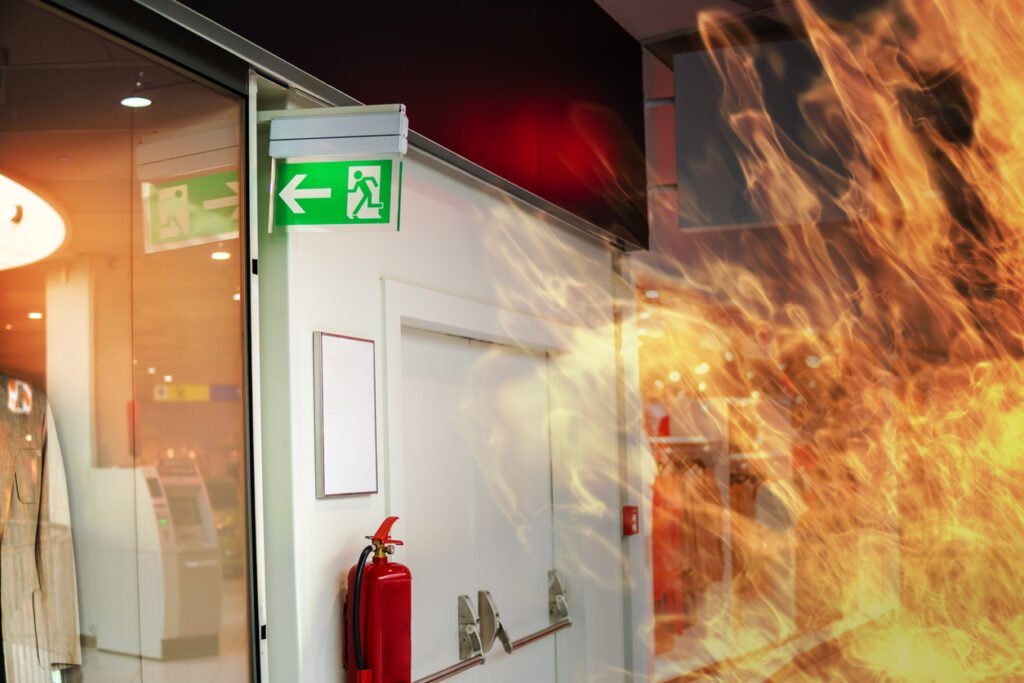The Importance of Fire Safety in the Workplace
Fire safety in the workplace isn’t just a legal requirement, it’s a critical component of keeping employees safe and businesses operational. Not to mention they’re expensive, dangerous, and more common than you would think. So common, in fact, that UK businesses lose millions each year due to fires. That’s not just a few burnt toast incidents in the staff kitchen; it’s full-blown evacuations, damage to property, injuries, and all the fun that comes with legal investigations and insurance claims.
Fire Safety: What It Is and Why You Should Care
At its core, fire safety is about preventing fires and knowing exactly what to do if one breaks out. It’s not rocket science, but it does require planning and the right training.
Under UK law, two major pieces of legislation drive this home:
- The Regulatory Reform (Fire Safety) Order 2005 – which basically says, “Do a risk assessment and fix what’s risky”.
- The Health and Safety at Work Act 1974 – sets out the general duties that employers, employees, and others (like contractors) have to ensure health and safety in the workplace.
If you’d like more detailed information (or you’re the designated person in your office who actually reads policies), check out the NEBOSH Certificate in Fire Safety. It’s an ideal qualification for anyone wanting to level up their fire safety knowledge beyond knowing where the fire extinguisher is.
So, Who’s Actually Responsible?
This is the golden question really. According to GOV.UK, responsibility doesn’t fall on just one person (unless you work alone). In a workplace setting, the responsibility is shared across a few key roles.
Employers: Congratulations, You’re in Charge
If you’re the employer or building owner, congratulations, you’re legally and morally on the hook. Your list of duties therefore include:
- Carrying out a proper fire risk assessment.
- Providing fire safety training.
- Ensuring exits are accessible.
- Keeping accurate records.
Employees: You’re Not Off the Hook
Employees are responsible for:
- Following fire safety policies.
- Reporting hazards.
- Participating in fire drills.
In 2019, a warehouse in Manchester learnt the hard way when unreported hazards led to a massive fire. The result? Over £1.2 million in damages and a string of very uncomfortable meetings I should imagine.
Fire Safety Officers
Fire safety officers (or the designated “responsible person”) play a crucial role in connecting fire safety policies with everyday practice. Their responsibilities include:
- Conducting regular inspections to identify and address fire risks.
- Coordinating emergency responses to ensure everyone knows what to do in the event of a fire.
- Organising fire drills and helping staff understand procedures and expectations.
How to Develop a Comprehensive Fire Safety Plan
Step 1: Identification
Begin by identifying potential fire hazards, such as:
- Flammable materials stored near heat sources.
- Overloaded sockets.
- Blocked exits or missing fire safety signage.
Different work environments pose different risks. For example, kitchens are high-risk due to open flames and hot equipment. Warehouses often store combustible materials. Even office environments can pose risks; especially where electrical safety is overlooked. For a detailed checklist, refer to the official fire risk assessment guidance on GOV.UK.
Step 2: Fire Safety Policies
Your fire safety policy should clearly outline:
- Roles and responsibilities during a fire.
- Maintenance schedules for fire safety equipment.
- Procedures for reporting hazards or incidents.
Small businesses benefit from simple, easy-to-follow plans. Larger organisations need scalable policies that work across multiple teams or locations. Either way, a laminated sheet behind the kettle won’t suffice.
Step 3: Equipment Maintenance
Make sure all fire safety equipment is in working order. This includes:
- Fire extinguishers (check expiry dates).
- Fire alarms (test them regularly).
- Emergency lighting.
Step 4: Evacuation Procedures
A thorough evacuation plan should include:
- How to sound the alarm.
- Calling emergency services immediately.
- Guiding staff to designated muster points.
- Confirming everyone has evacuated safely.
Fire Safety Training and Education
Training is where most fire safety plans fall off, but it really is crucial. Proper fire safety training means people don’t panic, they respond…ideally with calm competence rather than flailing arms.
Many training options exist, such as:
- General fire awareness for all staff.
- Fire warden training for those in charge.
- Equipment use, evacuation procedures, and industry-specific refreshers.
A word of advice: make it engaging, make it regular. And most importantly, it’s mandatory, not “optional unless we’re really busy.” Training should be refreshed annually or biannually, depending on the risks involved.
If your goal is to implement more effective fire safety measures, the NEBOSH Certificate is a great way to build credibility. And if you’re already on the course, these practical assignment tips will help you avoid common pitfalls.
Monitoring and Reviewing Fire Safety Measures
Fire safety plans need regular attention. Conduct audits. Update the risk assessment if anything changes: new staff, new layout, new kettle.
Skipping reviews is how companies end up with ineffective safety measures. It’s also how they end up with hefty fines—up to £5,000 for minor infractions, and unlimited fines (plus potential jail time) not ideal to say the least.
An easy way to avoid this is to keep records of everything: training, inspections, drills.
Real Lessons
A 2021 office fire in London racked up £750,000 in damages. Why? Blocked exits and a broken alarm system. Thankfully nobody was hurt, but the company was fined £80,000 and spent months recovering from the PR disaster that followed.
Final Thoughts
Fire safety works when everyone works together. Ignore it, and you’re gambling with lives, livelihoods, and legal consequences. Take it seriously, and you’ll sleep a little easier knowing your workplace has the right measures in place to avoid disaster. After all, fires don’t wait for plans – so just make sure you have one.
Learn more about the NEBOSH Certificate in Fire Safety and explore training options to keep your workplace fire-safe.
